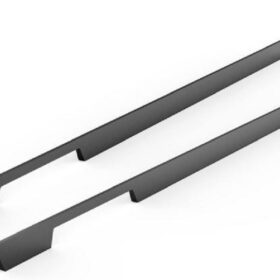Troubleshooting Common Issues with Glass Door Profiles
Glass door profiles provide a sleek and modern aesthetic to any building, but like any other building component, they can encounter issues that affect their performance and appearance. Troubleshooting these issues effectively requires a systematic approach that identifies the root cause and implements appropriate solutions. This article explores common issues with glass door profiles and provides detailed guidance on resolving them.
Misalignment and Gaps
Misalignment and gaps between the glass door profile and the frame can occur due to several factors. These include incorrect installation, thermal expansion or contraction, and loose screws or hinges. To resolve misalignment, check the mounting screws and hinges to ensure they are properly tightened. If necessary, adjust the frame or door profile to eliminate gaps and ensure proper alignment.
Condensation and Moisture
Condensation on glass door profiles is a common issue in humid environments. When warm, moist air comes into contact with the cooler surface of the glass, it condenses into water droplets. To prevent condensation, increase airflow around the door profile by installing a fan or opening windows nearby. Additionally, ensure that the door is properly sealed and has adequate ventilation to prevent moisture buildup.
Warping and Bowing
Extreme temperature fluctuations or improper installation can cause glass door profiles to warp or bow. Warping occurs when the profile bends or curves, while bowing refers to a deformation that creates an arc or curve in the profile. To resolve warping or bowing, inspect the installation for any loose screws or improper mounting. If necessary, remove the profile and reinstall it to ensure proper alignment and support.
Fogging and Hazing
Fogging and hazing occur when moisture becomes trapped between the glass panes of the door profile. This can be caused by a broken seal or improper installation. To resolve fogging or hazing, remove the door profile and inspect the seal. If the seal is broken or damaged, replace it to restore the airtightness of the unit.
Sticking and Binding
Sticking and binding occur when the glass door profile does not move smoothly within the frame. This can be disebabkan by several factors, including improper adjustment, accumulated dirt or debris, or warped profiles. To resolve sticking or binding, clean the tracks and rollers to remove any obstructions. If necessary, adjust the frame or door profile to ensure smooth movement.
Conclusion
Troubleshooting common issues with glass door profiles requires a methodical approach that identifies the root cause and implements appropriate solutions. By understanding the potential issues and their causes, building professionals can effectively address these problems and maintain the performance and aesthetics of their glass door profiles. Regular maintenance and inspection can also help prevent these issues from occurring and ensure the longevity of the door system.
-
2024-09-14Exploring the Different Types of Modern Closet Door Pulls and Their Applications
-
2024-09-14How Cabinet Door Pull Handles Support High-Traffic Areas
-
2024-09-06Cost-Benefit Analysis of Investing in High-Quality Long Wardrobe Door Handles
-
2024-09-04How Flat Cabinet Handles Enhance Modern Interior Design
-
2024-11-29Top Trends in Modern Kitchen Cabinet Pulls for 2024
-
2024-11-28The Ultimate Guide to Modern Kitchen Cabinet Pulls- Materials, Styles, and Tips
-
2024-11-27Elevate Your Kitchen Design with These Must-Have Modern Cabinet Pulls
-
2024-11-26Sleek and Stylish- The Best Modern Kitchen Cabinet Pulls for a Contemporary Look






